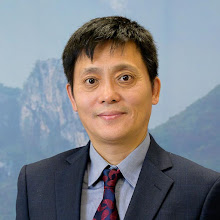Tiejun Tang
Psoriasis is a chronic inflammatory skin disease characterized by red, scaly patches that can cause severe physical discomfort and psychological distress. The disease is prevalent in the UK, and modern medicine offers limited treatment options with often unsatisfactory efficacy. Can traditional Chinese medicine (TCM) treat psoriasis? How effective is it? What are the underlying mechanisms? This paper aims to answer these questions from the perspective of patients.
Incidence of Psoriasis in the UK and Worldwide
Psoriasis affects approximately 1.7% of the UK population, equating to around 1.1 million individuals.[1] Globally, prevalence rates vary significantly, with Western countries reporting rates of around 2%, while East Asia has a notably lower prevalence of approximately 0.12%. These variations may be influenced by genetic, environmental, and lifestyle factors.
Western Medicine Treatment Principles
In Western medicine, psoriasis is understood as an immune-mediated disorder involving the overproduction of skin cells. Treatment strategies aim to reduce inflammation and slow skin cell turnover through the following approaches:
· Topical Treatments: Corticosteroids, vitamin D analogs, and moisturizers are commonly used for mild to moderate psoriasis.
· Phototherapy: Controlled exposure to ultraviolet (UV) light can help reduce symptoms in moderate to severe cases.
· Systemic Medications: For severe psoriasis, systemic treatments include methotrexate, cyclosporine, and biologic agents targeting specific immune pathways.
Despite these options, challenges persist, including variable patient
responses, potential side effects, frequent relapse after drug withdrawal, the
high cost of biologic therapies, and long waiting times for phototherapy in the
NHS.[2]
Traditional Chinese Medicine Perspectives on Psoriasis
TCM conceptualizes psoriasis as a manifestation of internal disharmony, often attributing it to factors such as blood heat, blood dryness, blood stasis, and blood deficiency.[3] According to TCM theory, these imbalances disrupt the flow of Qi and blood, leading to skin lesions. External factors such as wind, dampness, and heat, along with emotional stress and dietary habits, are also considered contributory. This holistic perspective emphasizes the interconnectedness of bodily systems and the need to address underlying imbalances. TCM employs a personalized approach, tailoring treatments based on individual presentations and underlying patterns.
The Efficacy of TCM in Treating Psoriasis
The efficacy of Chinese medicine in treating psoriasis has been found to be satisfactory. A review of 40 clinical research reports found that:
· 15 studies used Chinese herbal decoctions based on syndrome differentiation,
· 5 studies used Chinese patent medicines,
· 10 studies used Chinese herbal fumigation combined with narrow-band ultraviolet (NB-UVB) phototherapy,
· 10 studies used Chinese herbal baths combined with phototherapy.
The reported efficacy in these studies ranged between 90% and 100%. [3]
Modern Pharmacological Research on TCM Treatments
Research has identified a close association between the AhR/NF-κB axis and the inflammatory response in psoriasis. Indigo Naturalis (IDG) is a commonly used traditional Chinese medicine for psoriasis treatment. Studies suggest that its mechanism may involve the regulation of the AhR/NF-κB signaling pathway. Experimental research has demonstrated that IDG treatment significantly reduces TNF-α, IL-6, and NF-κB mRNA levels while enhancing the expression of AhR and CYP1A1 mRNA. Additionally, IDG promotes the translocation of AhR from the cytoplasm to the nucleus. In psoriasis-like mouse models, IDG significantly improved skin lesion severity, reduced inflammatory cytokines (such as IL-6, IL-17A, MCP-1, and TNF-α), increased CYP1A1 protein expression, and inhibited p65 and p-p65 protein expression. [4]
Shengma Jiedu Decoction is a commonly used TCM prescription for psoriasis treatment. The key ingredients, Shengma (Cimicifugae Rhizoma) and Tufuling (Smilax glabra Roxb), have been studied using network pharmacology combined with RNA sequencing. Research suggests that this herbal pair significantly improves psoriasis lesions, reduces inflammatory cell infiltration, and suppresses keratinocyte proliferation. Potential targets include TNF, JNK, IL-6, and IL-1β. [5]
Jingfang Granule (JFG) is derived from the ancient prescription Jingfang Baidu San. Research utilizing network pharmacology and molecular biology techniques has shown that JFG improves psoriasis by inhibiting the maturation and activation of BMDCs and reducing keratinocyte proliferation and inflammation. [6]
Shibiman (SBM) is a traditional Chinese medicine
preparation composed of Renshen (ginseng), Danggui (angelica), Heshouwu
(Polygonum multiflorum), and Luhui (aloe vera).
Studies indicate that SBM significantly alleviates imiquimod-induced psoriatic
skin inflammation in mice by inhibiting the IL-23/Th17 axis and CXCL16-mediated
endothelial activation. [7]
Conclusion
A large number of clinical randomized controlled trials (RCTs) have demonstrated that Chinese medicine is effective in treating psoriasis, with a favorable safety profile and minimal side effects. The mechanisms of action have been supported by extensive molecular biological research. Whether through single herbs, compound decoctions, or patent remedies, TCM provides multiple viable options for psoriasis treatment.
References
1. https://cks.nice.org.uk/topics/psoriasis/background-information/prevalence
2. SP. Smith. "The Landscape of Psoriasis Provision in the UK." Clin Exp Dermatol. 2020 Dec;45(8):1040-1043.
3. Yang Su. "A Review of Chinese Medicine for the Treatment of Psoriasis: Principles, Methods, and Analysis." Chin Med. 2021 Dec 20;16:138.
4. Yu Lin. "Indigo Alleviates Psoriasis Through the AhR/NF-κB Signaling Pathway: An In Vitro and In Vivo Study." PeerJ. 2024 Oct 21;12:e18326.
5. Xueqing Hu. "Combining Network Pharmacology, RNA-seq, and Metabolomics Strategies to Reveal the Mechanism of Cimicifugae Rhizoma - Smilax Glabra Roxb Herb Pair for the Treatment of Psoriasis." Phytomedicine. 2022 Oct;105:154384.
6. Qingqing Xu. "Jingfang Granules Exert Anti-Psoriasis Effects by Targeting MAPK-Mediated Dendritic Cell Maturation and PPARγ-Mediated Keratinocyte Cell Cycle Progression In Vitro and In Vivo." Phytomedicine. 2023 Aug;117:154925.
7. Chenyang Zhang. "Traditional Chinese Medicine Shi-Bi-Man Ameliorates Psoriasis via Inhibiting IL-23/Th17 Axis and CXCL16-Mediated Endothelial Activation." Chin Med. 2024 Mar 1;19:38.


